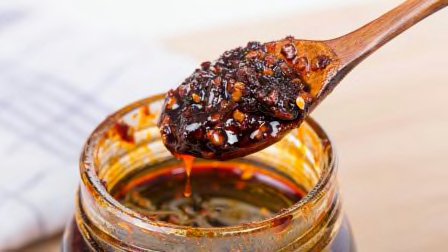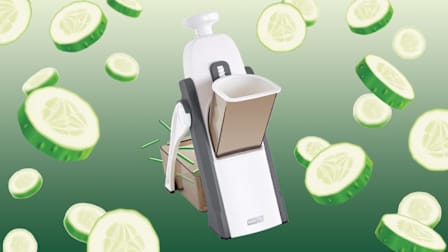Best Mandoline Slicers
We sliced, diced, and julienned fruits and vegetables in the kitchen using 11 mandolines to find the best. See which mandoline slicers made the cut.
When you shop through retailer links on our site, we may earn affiliate commissions. 100% of the fees we collect are used to support our nonprofit mission. Learn more.

I happen to use my mandoline slicer often around my kitchen—for veggie carpaccios, paper-thin radishes for tacos, and evenly sliced shallots for frying.
But the truth is I’ve never shopped for one or spent any money on one because I’ve always known someone who had one collecting dust in their kitchen. They were either too scared to use it or didn’t know how. I was always happy to take it off their hands.
Between thrifting mandolines for my own home and working in restaurant kitchens, I’ve used every type of mandoline slicer there is. But it wasn’t until now, while evaluating them for CR, that I realized these tools can cost over $200. Could those models possibly be worth it when $20 mandolines also exist?
To find out, we bought 11 popular models and used them to slice tomatoes, potatoes, radishes, cucumbers, zucchini, pears, onions, lemons, and, when applicable, julienne carrots.
What’s a Mandoline Slicer?
In the book “The Art of Flavor” (Riverhead Books, 2017), the authors Daniel Patterson and Mandy Aftel explain that a sharp blade can slice cleanly through the cell walls of food, thus preserving the integrity of the ingredient for crisp, clean, and distinct flavors that burst in the mouth and not prematurely on a cutting board. A dull knife or food processor will crush those cell walls instead, creating a more intense and merged flavor.
While a good chef’s knife does the job, a mandoline can do it faster and more easily, especially when lots of slicing is involved or consistency in thickness is required. Its sole purpose is to uniformly cut fruits and vegetables, either for presentation or so that the pieces cook at the same rate.
Best Mandoline Slicers
It turns out that price isn’t a reliable indicator of a good mandoline. Some of the priciest models my colleague Angela Lashbrook and I evaluated were headaches to use. A handful of others were able to slice only some vegetables and failed at others. Five models were good enough to earn a spot at the top of our list.
Across the board, we prefer the simpler handheld mandolines over the larger kickstand models because there are no complicated instructions to parse and no attachments to keep track of. If all you need is a handful of thin radish, cucumber, or onion slices to finish off a dish, nothing is quicker and more convenient than a trusty handheld mandoline.
For more on our criteria, see how we evaluated mandoline slicers, below.


















